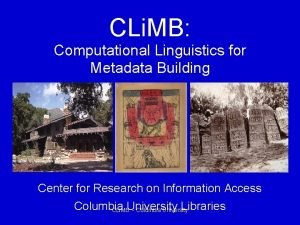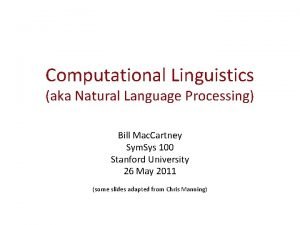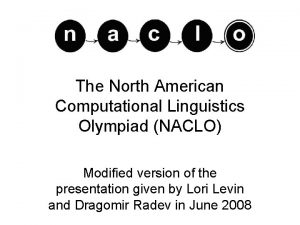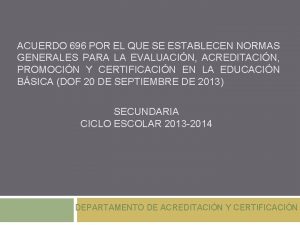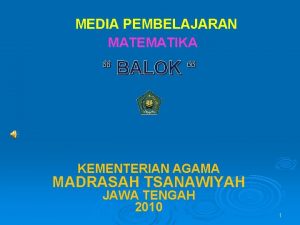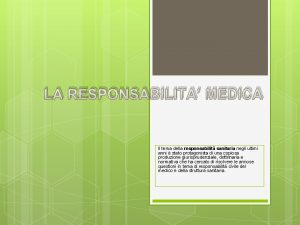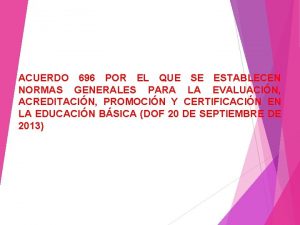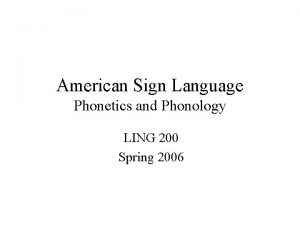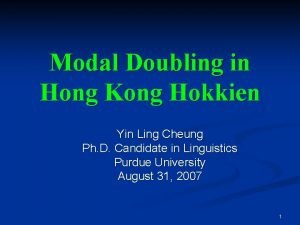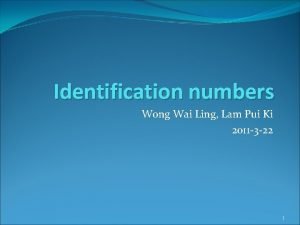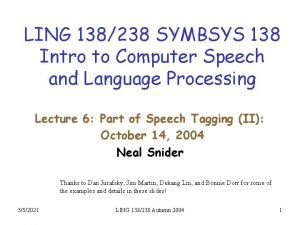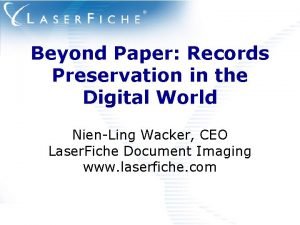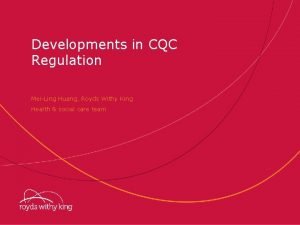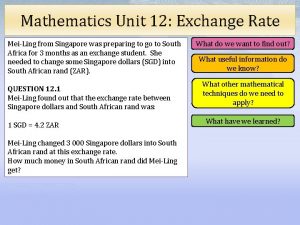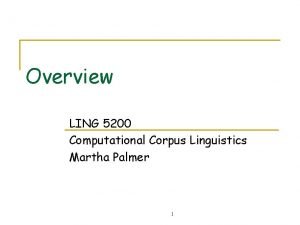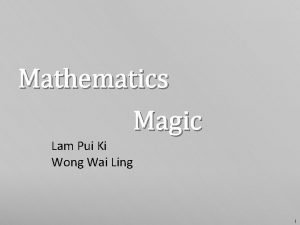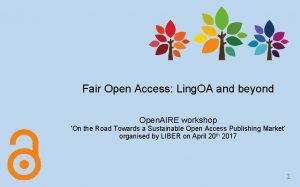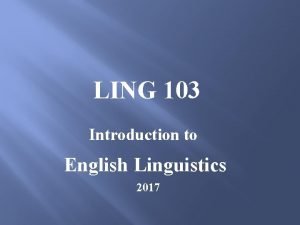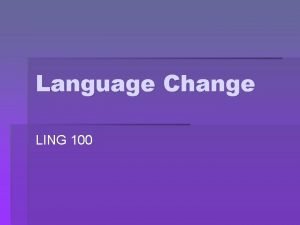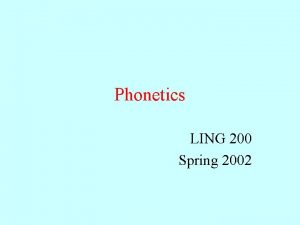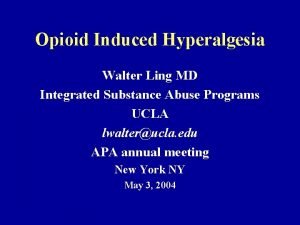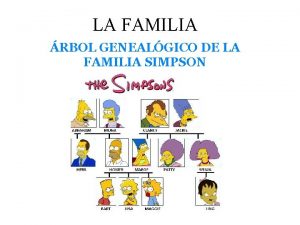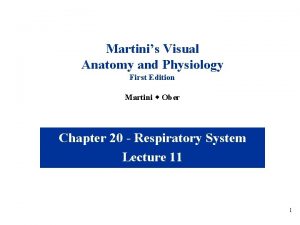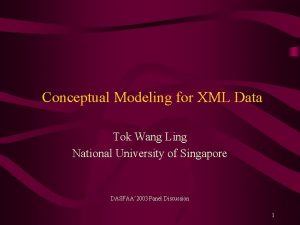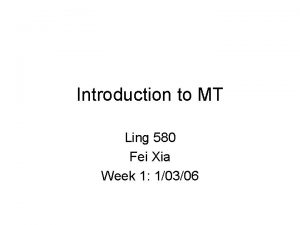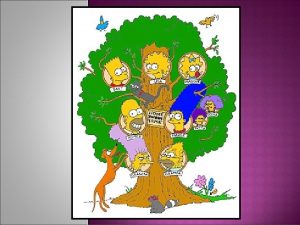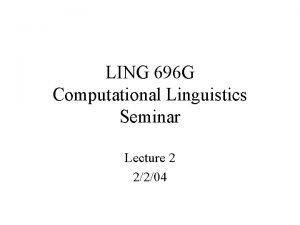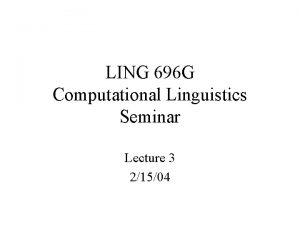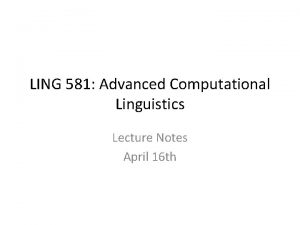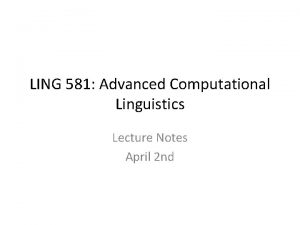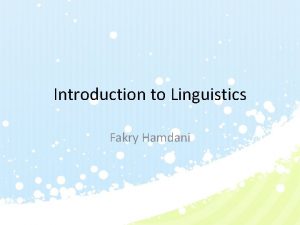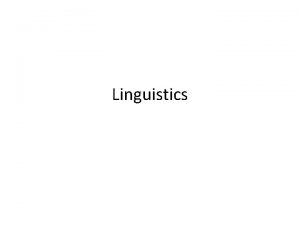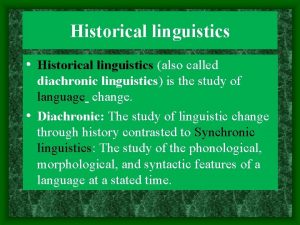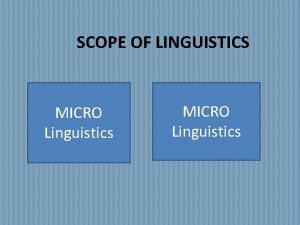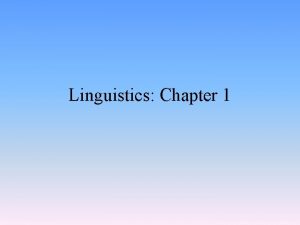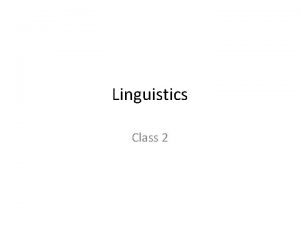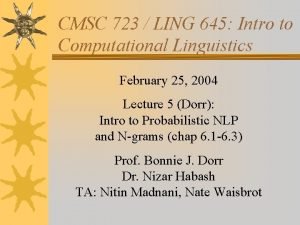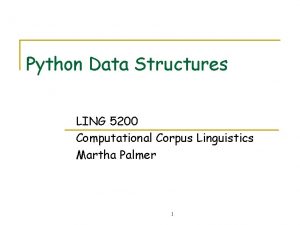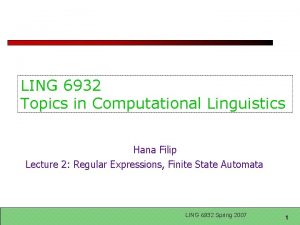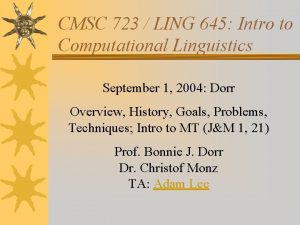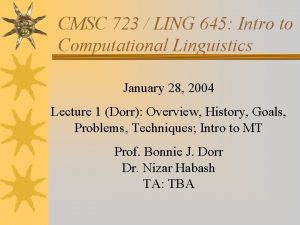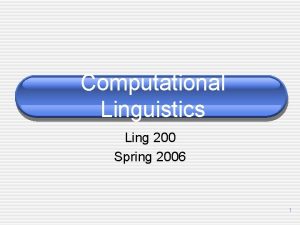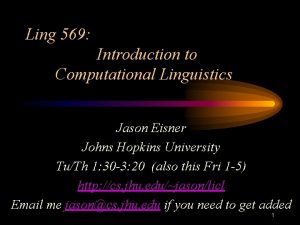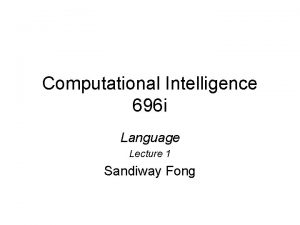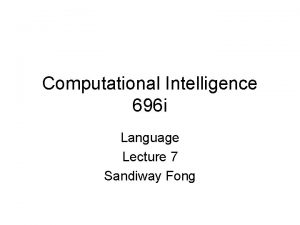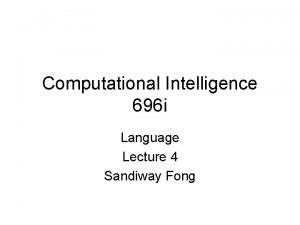LING 696 G Computational Linguistics Seminar Lecture 2




































- Slides: 36

LING 696 G Computational Linguistics Seminar Lecture 2 2/2/04

Administrivia • No meeting next Monday (2/09)

The PAPPI System • PAPPI: – Principles-and-Parameters Parser Interface – (real demo this time…)

Outline • General Introduction: – What is a Parser? – The Principles-and-Parameters Framework: Government-and-Binding Theory • Introduction to the PAPPI System: – User Interface – Debugging – Project Scope

Outline • Architecture Overview • Components: – Simple Morphology – Recovery of Phrase Structure – Recovery of Movement: Determination of chain features – Free Indexation – Conditions on Trees and Domains

Outline • General Introduction: – What is a Parser? – The Principles-and-Parameters Framework: Government-and. Binding Theory • Introduction to the PAPPI System: – User Interface – Debugging – Project Scope

What is a Parser?

Immediate Issues • Parser Knowledge: – Grammar • Which linguistic theory? – How to produce LDs? • Which parsing algorithm? • Other Issues: – Language Parameterization? • Software viewpoint: – How do we re-use subcomponents of grammar for other languages? • Linguistic theory viewpoint: – Re-use for other language => supporting evidence for principle or module – Lexical representation?

Principles-and-Parameters Framework • Government-and-Binding Theory: – Lectures on Government and Binding (LGB) (Chomsky, 1981) – A Course In GB Syntax (Lasnik & Uriagereka) MIT Press • Good introduction

Levels of Representation • D-structure: – Basic structure • S-structure: – visible movement, e. g. passivization, wh-movement, raising • LF: – Quantifier scope, covert wh-movement

Levels of Representation • Parsing Issues: – Recovery of empty categories – Recovery of “hidden” levels of representation – Relation between levels: re-creation of movement – Computational complexity

Outline • General Introduction: – What is a Parser? – The Principles-and-Parameters Framework: Government-and. Binding Theory • Introduction to the PAPPI System: – User Interface – Debugging – Project Scope

Interface


Project Scope • English – Classic GB: A Course in GB Syntax, Lasnik & Uriagereka – Plug-ins: VPS, Double Objects (Ch 5) Zero Syntax Pesetsky • Japanese – On the Nature of Proper Government, (Lasnik & Saito), Headfinal, pro-Drop, LF Wh-movement – Scrambling: Some Asymmetries in Japanese. . . (Saito 85) – On Long-Distance Scrambling (Saito 92). WCO, A/A-bar distinction, Binding – Kanda Project: o/ni-causatives, Double-o constraint, Antisuperiority. . .

Project Scope • Dutch • V 2 (also German), VR, Rightwards clausal extraposition. • French – Verb Movement, UG, and the Structure of IP, Pollock. Clitics (also Spanish) • Korean – Scrambling as Case-Driven Obligatory Movement, (Ch 2) Lee, Reconstruction • Turkish, Hungarian – Basic sentence structure, morphology, causatives. • Arabic – VSO/SVO weak/strong verb agreement features

Outline • Architecture Overview • Components: – Simple Morphology – Recovery of Phrase Structure – Recovery of Movement: Determination of chain features – Free Indexation – Conditions on Trees and Domains

Architecture

Architecture

Architecture • Salient Points: – Avoid hardwiring – Logic-based inference engine: – Unification. Choice points: single thread, parallel – Abstraction: • conditions on trees, features, domains – Direct interpretation: infeasible. • Specialization permits retargeting – Sicstus Prolog (native: fastcode) port: factor of 0. 425

Architecture

Outline • Architecture Overview • Components: – Simple Morphology – Recovery of Phrase Structure – Recovery of Movement: Determination of chain features – Free Indexation – Conditions on Trees and Domains

Simple Morphology: Features and Markers





Recovery of Phrase Structure • X-bar + X 0 -Movement Rules: – rule XP -> [XB|spec(XB)] ordered spec. Final st max(XP), proj(XB, XP). – rule XB -> [X|compl(X)] ordered head. Initial(X) st bar(XB), proj(X, XB), head(X). – rule v(V) moves_to i provided agr(strong), finite(V). – rule v(V) moves_to i provided agr(weak), V has_feature aux.

Recovery of Phrase Structure: Backtracking Canonical LR(1)-based Shift/Reduce Parser

Recovery of Phrase Structure: Other Constraints

Phrase Structure After Chain Formation

Recovery of Movement: Computation of Chain Features

Recovery of Movement: Complexity

Phrase Structure after Free Indexation


 Columbia computational linguistics
Columbia computational linguistics Chomsky computational linguistics
Chomsky computational linguistics Xkcd computational linguistics
Xkcd computational linguistics Computational linguistics olympiad
Computational linguistics olympiad Acuerdo 696
Acuerdo 696 9
9 Art. 8 legge gelli
Art. 8 legge gelli Acuerdo 696
Acuerdo 696 Real decreto 696/1995, de 28 de abril
Real decreto 696/1995, de 28 de abril Relationship between linguistics and applied linguistics
Relationship between linguistics and applied linguistics Language
Language 01:640:244 lecture notes - lecture 15: plat, idah, farad
01:640:244 lecture notes - lecture 15: plat, idah, farad Ling 200
Ling 200 Agnes ling
Agnes ling Cheung yin ling
Cheung yin ling Lam wai ling
Lam wai ling Ling
Ling Nien-ling wacker
Nien-ling wacker Mei-ling huang
Mei-ling huang Ling rolled
Ling rolled Who invented physical education
Who invented physical education Mei-ling from singapore was preparing
Mei-ling from singapore was preparing Ling
Ling Wai ling lam
Wai ling lam Ling oa
Ling oa Ling
Ling Ling shih fu
Ling shih fu Ling 100
Ling 100 Ling 200
Ling 200 Right marginal artery
Right marginal artery Walter ling
Walter ling Primas de bart borrachas
Primas de bart borrachas Artyom sidorkin
Artyom sidorkin Wang ling relationship
Wang ling relationship Mt ling
Mt ling Ling simpson
Ling simpson Jin ling cigarettes
Jin ling cigarettes
